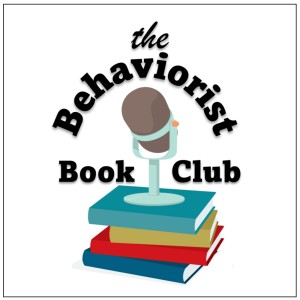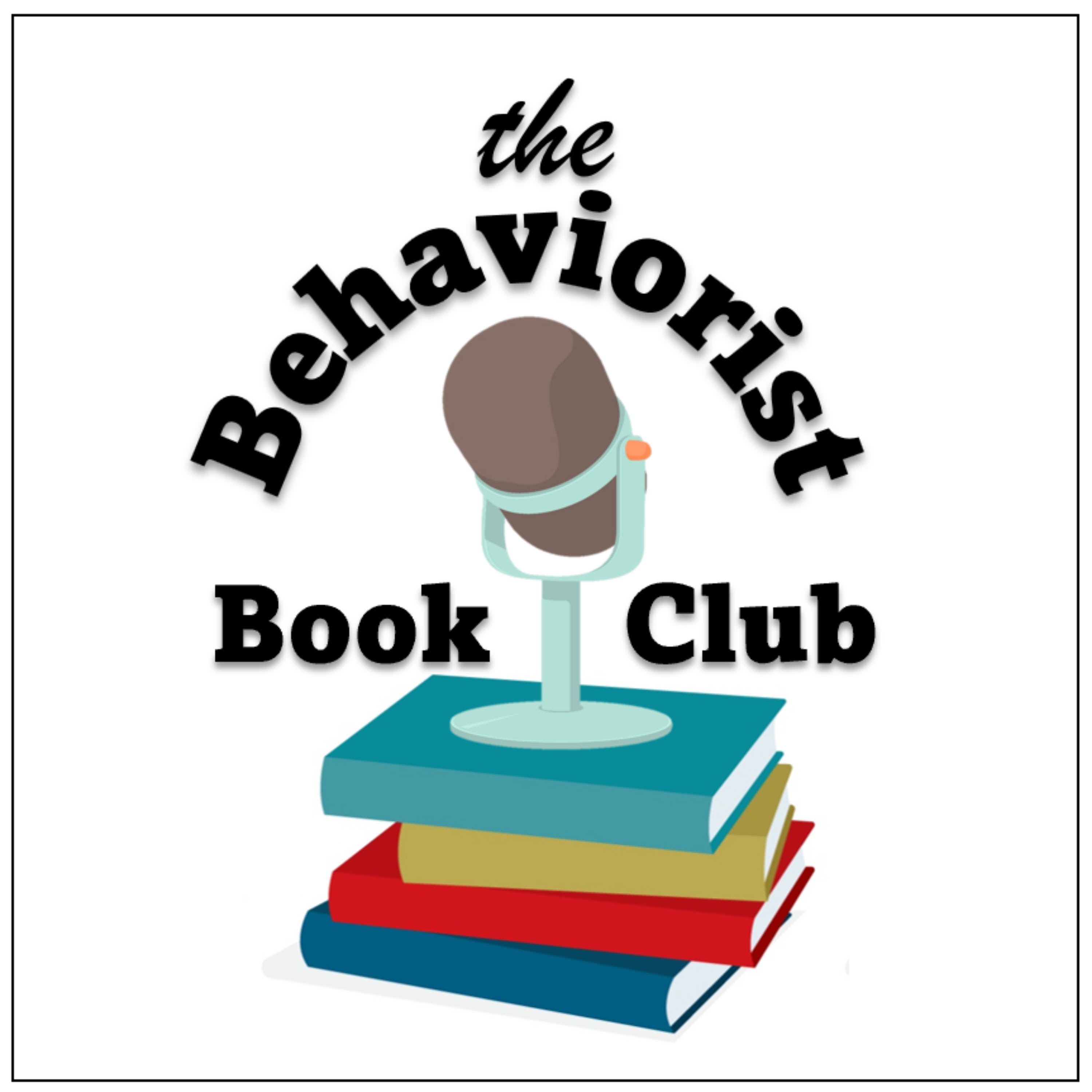Episodes

Friday Feb 18, 2022
Ep. 52- When and how to model play skills for kids
Friday Feb 18, 2022
Friday Feb 18, 2022
Teaching play skills to children with Autism is typically included in many early intervention plans. However, there has been little explanation on how to select the targets. Some people use peers as comparisons, and some use specific assessments. These authors compare the two methods and make suggestions for clinical behavior in the future.
Pane, H. M., Sidener, T. M., Reeve, S. A., Kisamore, A., & Nirgudkar, A. (2022). A comparison of development-matched and age-matched targets on play skills of children with autism spectrum disorder. Journal of Applied Behavior Analysis, 55(1), 195-213. https://doi.org/10.1002/jaba.891

Wednesday Feb 16, 2022
Ep. 51- The use of behavioral coaching to teach dance skills
Wednesday Feb 16, 2022
Wednesday Feb 16, 2022
Following the cat article Monday, we get to continue our pattern of fun topics by looking at the application of behavioral coaching to dance instruction. The authors created a manualized intervention and wanted to test out the effectiveness of their tool, as well as the social validity of it. This article is a great example of how to validate and test a new behavioral technology, as well as a great guide on behavioral coaching.
Quinn, M., Blair, K.-S. C., Novotny, M., & Deshmukh, S. (2022). Pilot study of a manualized behavioral coaching program to improve dance performance. Journal of Applied Behavior Analysis, 55(1), 180-194. https://doi.org/10.1002/jaba.874

Monday Feb 14, 2022
Monday Feb 14, 2022
Ep. 50- How an analysis of cat behavior can help the everyday behavior analyst
This is one of my favorite articles in JABA, primarily because I am huge cat person. However, I also really enjoy the focus on solid behavioral methodology and function-based treatments. These authors took a creative approach to a socially significant problem and ended up having a great intervention and teaching tool to show for it.
Fritz, J. N., Fletcher, V. L., Dyer, S. P., Carpenter, K. A., Skrbec, M. L., & Yankelevitz, R. L. (2022). Functional analysis and treatment of aggression exhibited by cats toward humans during petting. Journal of Applied Behavior Analysis, 55(1), 169-179. https://doi.org/10.1002/jaba.877

Friday Feb 11, 2022
Ep. 49- False positive functions and the IISCA
Friday Feb 11, 2022
Friday Feb 11, 2022
These authors wrote this paper to continue the conversation and the research related to the IISCA vs. the FA. Specifically, this paper looks at the frequency of false positive function identifications when using a synthesized contingency. Some of the past articles discussing this topic have left out a technological description and usage of the interview and observation phase in the IISCA. The authors suspect that this may be the reason why there are differing research papers that are being put out that seem to contradict each other. So, by examining the observation and interviewing procedures, the authors attempted to compare the procedures and contribute to the conversation around when to use each analysis, and what would be best for the client that we serve.
Irwin Helvey, C. & Van Camp, C. M. (2022). Further comparison of isolated and synthesized contingencies in functional analyses. Journal of Applied Behavior Analysis, 55(1), 154-168. https://doi.org/10.1002/jaba.890

Wednesday Feb 09, 2022
Ep. 48- Renewal, and its prevalence among nonsocial response classes
Wednesday Feb 09, 2022
Wednesday Feb 09, 2022
We have talked about resurgence. We have talked about renewal. We have even talked about renewal mitigation strategies. But these authors noted a hole in the research and went to fix it. That hole is the lack of study on renewal when it comes to automatically maintained behavior. In fact, most of the summary papers that examine trends excluded this response class. However, this paper focuses solely on renewal when the behavior is maintained by nonsocial reinforcement, and they identify some key differences, and similarities, in the way that renewal affects behaviors that are automatically maintained. Read, and listen, on and we will walk through each one of them!
Muething, C., Call, N., Ritchey, C. M., Pavlov, A., Bernstein, A. M. & Podlesnik, C. A. (2022). Prevalence of relapse of automatically maintained behavior resulting from context changes. Journal of Applied Behavior Analysis, 55(1), 138-153. https://doi.org/10.1002/jaba.887

Monday Feb 07, 2022
Ep. 47- How and when to prompt during functional communication training
Monday Feb 07, 2022
Monday Feb 07, 2022
Continuing our jaunt through the functional communication research field, we will be looking at quite a fascinating little article from Landa et al. This article looks at the how and when to prompt when teaching a communicative response. There is a research hole, quite a big one, related to the technological description of prompting in functional communication training. Very few articles describe if a therapist should prompt prior to, immediately after, or delay a prompt based on problem behavior occurring. This large gab in methods is a problem for practitioners, as it can lead to some unwelcome behaviors, such as an extinction burst during a treatment phase. Therefore, these authors examined when it was best to prompt by comparing three commonly used methods. They looked at within session and overall data patterns to determine if there was a more efficient and safer method.
Landa, R. K., Hanley, G. P., Gover, H. C., Rajaraman, A. & Ruppel, K. W. (2022). Understanding the effects of prompting immediately after problem behavior occurs during functional communication training. Journal of Applied Behavior Analysis, 55(1), 121-137. https://doi.org/10.1002/jaba.889

Friday Feb 04, 2022
Friday Feb 04, 2022
The last episode we did was on functional communication training, and this one continues that trend, one of the differences is that this article focuses on the follow-up to the training. Specifically, these researchers focused on fading the schedule of reinforcement following successful FCT. Prior research has looked at different ways to do this, including competing stimulus, additional components, and slower fading using a multiple schedule. This article takes a naturalistic approach and examines what the effects of having naturally occurring stimuli in the environment has on the behavior. Similar to Wednesday’s article, this essentially is a question of reducing resurgence. The researchers were able to compare multiple different conditions and effectively fade the schedule with no increase in problem behavior.
Simmons, C. A., Salvatore, G. L., & Zangrillo, A. N. (2022). Efficiency and preference for alternative activities during schedule thinning with functional communication training. Journal of Applied Behavior Analysis, 55(1), 101-120. https://doi.org/10.1002/jaba.886

Wednesday Feb 02, 2022
Wednesday Feb 02, 2022
Functional communication training is an essential part of a behavior analysts’ job. It is one of the most used treatments, and there is no denying that. However, these authors were able to cleanly identify a huge gap in the research literature. That gap was the lack of research regarding functional communication training to bilingual learners. Specifically, these researchers set out to teach a bilingual learner to change their mand modality (language) based on an extinction contingency by a caregiver. This was to ensure that the resurgence would not occur just because a caregiver or therapist did not understand the language that was being used. With a clever mixture of behavioral skills training and massed trials, they were able to achieve this in a very naturalistic manner.
Banerjee, I., Lambert, J. M., Copeland, B. A., Paranczak, J. L., Bailey, K. M., & Standish, C. M. (2022). Extending functional communication training to multiple language contexts in bilingual learners with challenging behavior. Journal of Applied Behavior Analysis, 55(1), 80-100. https://doi.org/10.1002/jaba.883

Monday Jan 31, 2022
Monday Jan 31, 2022
To understand the meaning behind this translational article, it is important to understand the background context. Hagopian et al., 2015 and 2017 developed and finalized a way to identify different subtypes of automatically maintained behavior. Specifically, they looked at self-injury. They were trying to figure out why some clients with SIB would easily be treated and some would require multiple treatment components, sometimes even punishment. Hagopian et al., were able to determine that automatically maintained self-injury can be divided into three different subtypes. Subtype 1 presents with differentiation between the alone and play condition of an FA, Subtype 2 has no differentiation between the alone and play condition, and subtype 3 engages in self-restraining behavior. Based on their findings and follow-up studies, they found that subtype 2 behaviors were very difficult to change and resistant to reinforcement-based strategies. Therefore, Rooker et al., 2019 conducted a translational study to examine if this resistant to change trait persisted across other, non-automatically maintained responses classes. They found that it did not persist, but that when they were conducting this experiment, they found something unique. When engaging with the arbitrary response, self-injury decreased. Therefore, to examine this further, this paper looked at the effect that different schedules of competing reinforcement have on the frequency of automatically maintained self-injury. They found that the richer the schedule of reinforcement for a response outside the auto response class, the less auto SIB occurred. This indicates that a potential treatment pathway would be competing response classes, rather than competing stimuli.
To understand the meaning behind this translational article, it is important to understand the background context. Hagopian et al., 2015 and 2017 developed and finalized a way to identify different subtypes of automatically maintained behavior. Specifically, they looked at self-injury. They were trying to figure out why some clients with SIB would easily be treated and some would require multiple treatment components, sometimes even punishment. Hagopian et al., were able to determine that automatically maintained self-injury can be divided into three different subtypes. Subtype 1 presents with differentiation between the alone and play condition of an FA, Subtype 2 has no differentiation between the alone and play condition, and subtype 3 engages in self-restraining behavior. Based on their findings and follow-up studies, they found that subtype 2 behaviors were very difficult to change and resistant to reinforcement-based strategies. Therefore, Rooker et al., 2019 conducted a translational study to examine if this resistant to change trait persisted across other, non-automatically maintained responses classes. They found that it did not persist, but that when they were conducting this experiment, they found something unique. When engaging with the arbitrary response, self-injury decreased. Therefore, to examine this further, this paper looked at the effect that different schedules of competing reinforcement have on the frequency of automatically maintained self-injury. They found that the richer the schedule of reinforcement for a response outside the auto response class, the less auto SIB occurred. This indicates that a potential treatment pathway would be competing response classes, rather than competing stimuli.
Rooker, G. W., Hagopian, L. P., Haddock, J. N., Arevalo, A. R., Bonner, A. C. & Dillon, C. M. (2022). Analysis of unexpected disruptive effects of contingent food reinforcement on automatically maintained self-injury. Journal of Applied Behavior Analysis, 55(1), 62-79. https://doi.org/10.1002/jaba.875

Friday Jan 28, 2022
Ep. 43- JABA in One Take- Towards Trauma-Informed care in behavior analysis
Friday Jan 28, 2022
Friday Jan 28, 2022
Trauma-informed care has recently come into the spotlight in many other fields, but this is one of the first focused articles on it in behavior analysis. There have been some other notable exceptions, but generally, the concept of trauma has been ignored by the larger behavior analytic community. There are potentially a few reasons for this, and this article breaks them down quite nicely. The authors then lead us through what a behavior analytic trauma informed care model could look like, giving plenty of examples and options. In my opinion, this is one of the best new articles for a behavior analyst to read, as it goes into the why behind changing to a trauma informed care model, as well as the how to change. It is clear from reading that the authors were extremely passionate on this topic, and it was a pleasure to read and review.
Rajaraman, A., Austin, J. L., Gover, H. C., Cammilleri, A. P., Donnelly, D. R., & Hanley, G. P. (2022). Toward trauma-informed applications of behavior analysis. Journal of Applied Behavior Analysis, 55(1), 40-61. https://doi.org/10.1002/jaba.881

